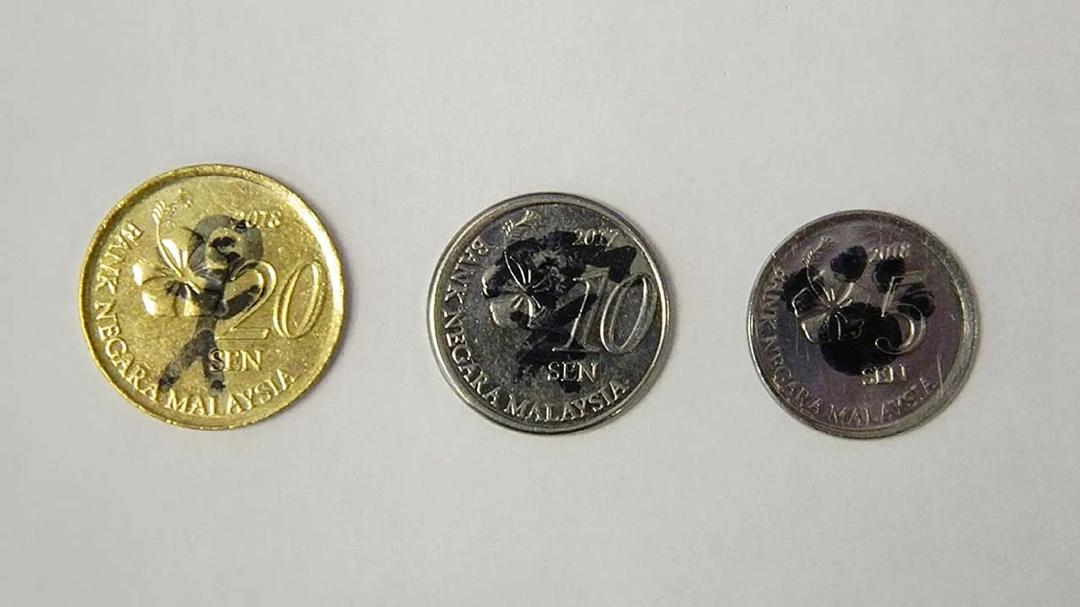AT the base of a historic statue of Nathan Hale, which stands outside the original headquarters of the Central Intelligence Agency (CIA) in Langley, Virginia, United States (US), lay a small but curious discovery – three Malaysian coins: a 20 sen coin from 2018, a 10 sen coin from 2017, and a 5 sen coin from 2018.
The find, shared by the CIA through its weekly artifact spotlight on the agency’s official X (formerly Twitter) and Facebook accounts, has sparked widespread curiosity.
What makes the discovery unusual is not only the fact that it came from Malaysia – a country not often directly associated with CIA operations – but also the small details accompanying it.
The agency did not offer further explanation on the meaning behind the coins or the markings on them.
The CIA did not disclose who placed the coins or when they were left at the foot of Hale, America’s first and most well-known intelligence officer.
So what is Malaysia’s connection to the CIA? Who left the seemingly newly-minted coins at the statue?
Adding to the mystery, each coin bears a small illustration drawn in black ink – each possibly carrying its own symbolic message.
According to the post, the 20-sen coin features a stick figure drawing, the 10-sen coin shows an unclear image that resembles a woman or child, while the 5-sen coin depicts what appears to be an animal footprint.
The CIA explained in its post that leaving coins at the foot of the statue is not uncommon – it has long been a tradition among CIA officers before they are deployed on foreign missions.
“According to legend, the act of leaving coins is believed to bring good luck and ensure Hale’s protection over the officers during their missions.
“Officers usually leave a US quarter featuring George Washington, who was Hale’s commanding officer during the American Revolutionary War.
“However, some choose coins from other countries that carry symbolic or personal meaning. Some even leave 76 cents to commemorate the year 1776, accompanied by unique drawings or messages,” the post read.
The same post also mentioned that the coins are periodically collected from the memorial and handed over to the CIA Museum.
They are then donated to the CIA Officers Memorial Foundation and the Third Option Foundation – two organisations that support intelligence officers wounded in the line of duty and the families of those who have died while serving.
The Nathan Hale statue is more than just a historical monument. It stands as a symbol of bravery and sacrifice, commemorating the first American intelligence officer who was executed in 1776 at the age of 21 for spying on British troop movements during the American Revolutionary War.
The bronze statue depicts Hale with his hands bound behind his back, his gaze fixed forward with determination and courage – a haunting image of the final moments before his execution.
The statue has come to embody the loyalty and valour of intelligence officers who serve their country.
In the post dated July 15, 2025, the agency included a link titled ‘Artifact of the Week: Coins Left at the Nathan Hale Statue’.
As of yesterday evening, the post had garnered nearly 600 shares, 400 comments, and almost 2,000 likes.
The discovery has sparked a variety of reactions, especially among Malaysians who were both surprised and intrigued to see their country mentioned in the context of the world’s most powerful intelligence agency.
Could the coins have been left by a CIA officer once stationed in Malaysia? Or do they symbolise something related to an intelligence mission involving Malaysia? No one knows for sure. And the CIA isn’t saying more than what has already been shared.
Interestingly, the years on the coins correspond with significant moments in Malaysia’s recent history – including a global financial scandal in 2017 that triggered international investigations and the historic change of government in 2018.
Yet in the absence of concrete evidence, it is perhaps best to accept the CIA’s official line – that the coins are part of an internal tradition.
Whatever the story may be, the three Malaysian coins are now part of the CIA Museum’s official collection – placed alongside other artifacts that hold stories of sacrifice, bravery, and the secrets of the intelligence world.
A brief background: the CIA’s establishment was long, complex, and steeped in secrecy – fitting for its role as the principal intelligence agency of the free world.
It was officially formed on September 18, 1947, under the National Security Act by President Harry S. Truman.
Prior to that, during World War II, the US had an intelligence body known as the Office of Strategic Services (OSS), considered the forerunner of the CIA.
The OSS was disbanded after the war and formally replaced by the CIA to address emerging threats in the post-war world – especially during the Cold War era marked by espionage conflicts between the US and the Soviet Union.

















